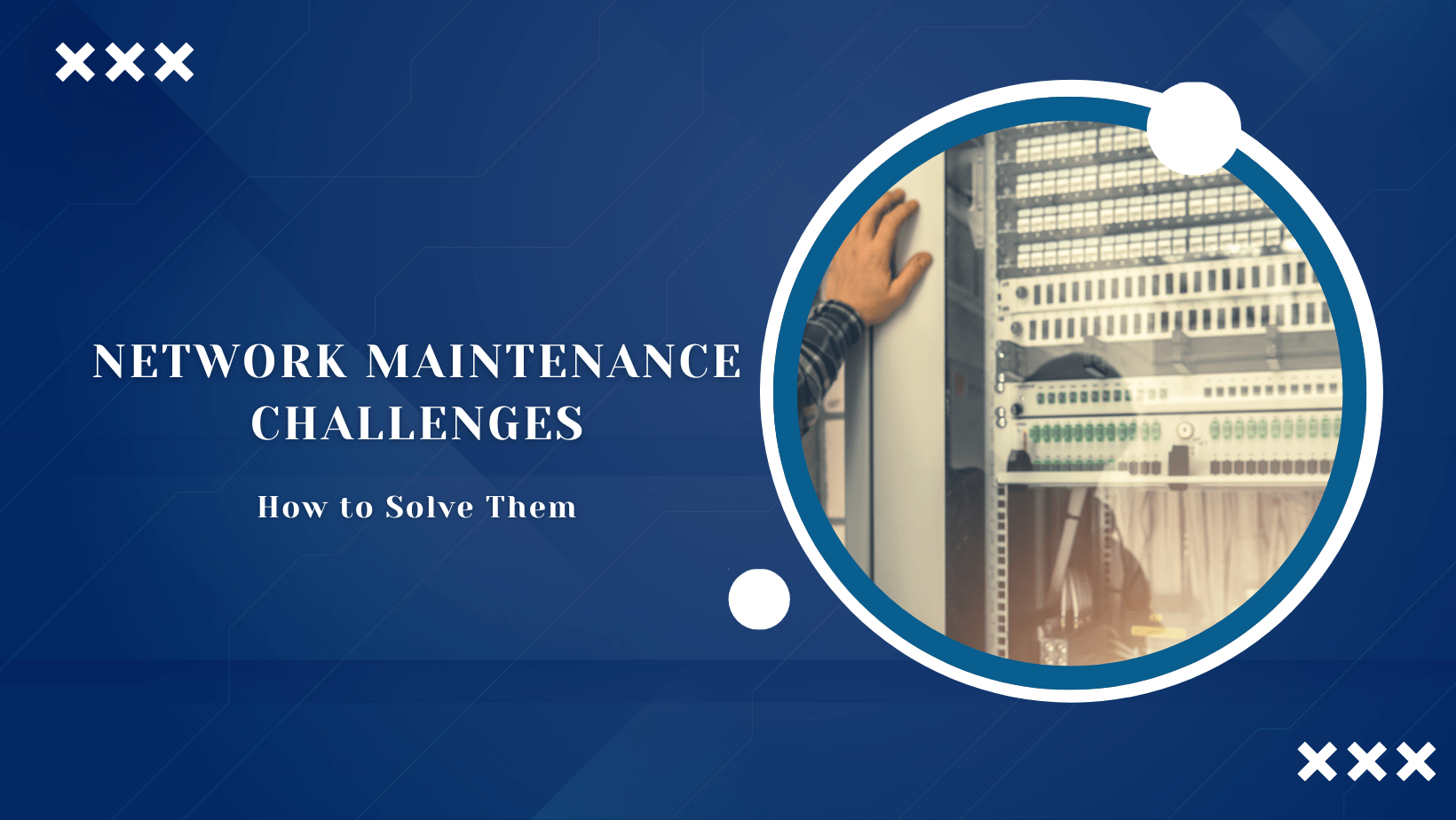Common Network Maintenance Challenges and How to Solve Them
Networks are essential in modern organizations, supporting daily operations, communication, and data management. Network maintenance challenges are a key aspect of ensuring these networks work properly. Keeping networks running smoothly is very important, but it comes with its challenges. In this article, we will explain the importance of network maintenance, network maintenance challenges, talk about common issues administrators face, and share practical solutions to ensure networks stay efficient and secure.
Ensuring Effective Network Maintenance
Network maintenance challenges involves the ongoing process of monitoring, managing, and troubleshooting network components to ensure they perform efficiently and securely. This practice is essential for several reasons:
Regular maintenance plays a key role in keeping a network running smoothly. It reduces delays and ensures efficient data transfer, which boosts overall performance. Security is another important aspect, as staying updated and fixing vulnerabilities helps protect against unauthorized access, breaches, and data leaks.
A Reliability factor comes into play when a well-maintained network experiences fewer failures, ensuring smooth operations with minimal downtime. Scalability is also critical, as a properly managed network can handle growth and meet increased demands without losing performance or security. Lastly, Compliance with industry regulations often requires consistent updates and monitoring, making maintenance essential to meet legal standards.
However, network maintenance comes with its own set of challenges that network administrators must address to maintain optimal performance, security, and scalability. Let’s dive into these common challenges and how they can be managed effectively.
Common Network Maintenance Challenges
Hardware Issues
Network Maintenance Challenges arise when networks depend on physical parts like routers, switches, and cables. If these components break or stop working, it can disrupt the network. For example, damaged cables or faulty switches can cause connection problems and downtime. Quickly finding and fixing or replacing faulty hardware is important to avoid major interruptions.
Software Network Challenges
Network devices use operating systems, firmware, and software that need regular updates. These updates usually improve security and performance, but sometimes they can cause issues like bugs or compatibility problems that may affect the network’s stability. Finding a way to update without causing disruptions is a common challenge.
Network Security Concerns
Maintaining strong security is essential to preventing unauthorized access, data breaches, and cyberattacks. In Network Maintenance Challenges, administrators should implement tools such as firewalls, unauthorized access detection systems, encryption protocols, and access controls. Without proper security measures, networks remain vulnerable to threats.
Performance Optimization
Performance issues like slow connections or devices not working correctly can slow down productivity. It’s important to regularly check and improve how data moves through the network, making sure everything is running smoothly and efficiently.
Human Factors
The expertise and experience of network administrators play a significant role in maintenance. A lack of skilled professionals or high turnover rates can lead to misconfigurations, errors, and overall instability in the network.
Network Maintenance Challenges Solutions and Strategies
To overcome these challenges, organizations can take a few important steps. Regularly monitoring the network using specialized tools can help identify problems like performance issues, security risks, or hardware failures early. This proactive approach ensures that potential issues are addressed before they cause major disruptions. Additionally, keeping software and firmware up to date through a structured patch management process can fix vulnerabilities and improve system functionality.
Another key strategy is dividing the network into smaller parts, known as network segmentation. This improves security by limiting the impact of any breaches. Keeping accurate records of device settings and configurations, along with using automated tools, makes managing the network more efficient through configuration management. Lastly, strong security protocols such as access controls, encryption, and reliable authentication methods can protect the network from unauthorized access and cyber threats.
By applying these strategies, network administrators can address many of the common challenges effectively and ensure smooth operations.
Conclusion
Network maintenance is a critical aspect of ensuring smooth business operations. Network Maintenance Challenges, such as hardware failures and scalability concerns, can disrupt workflows and reduce productivity. However, with regular monitoring, strategic planning, and skilled management, these hurdles can be overcome. A reliable network forms the foundation for any organization’s success
For businesses seeking expert guidance in managing their network maintenance challenges, Agrius IT provides tailored solutions designed to enhance reliability, security, and performance. By addressing these challenges, Agrius IT ensures your network remains a valuable asset for your organization.
faq
Network maintenance ensures smooth operations, enhances performance, prevents downtime, and protects against security threats. It’s essential for the reliability and growth of any organization.
Common challenges include hardware failures, software compatibility issues, network security risks, performance optimization, scalability, and maintaining proper documentation.
You can improve performance by monitoring traffic, optimizing bandwidth usage, updating devices regularly, and addressing misconfigurations.
Implement strong access controls, encryption, firewalls, and intrusion detection systems. Regularly update software and conduct security audits to identify vulnerabilities.
Network monitoring tools, configuration management systems, and automated patch management solutions are valuable for maintaining an efficient network.
Network maintenance should be ongoing, with regular checks for performance, security, and hardware health. Scheduled updates and audits should be conducted monthly or quarterly.
Documentation provides a clear overview of network configurations, topologies, and device details. It’s essential for troubleshooting, planning upgrades, and ensuring consistency.



